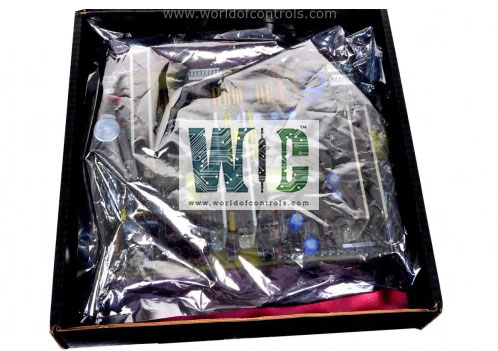SPECIFICATIONS
Part No.: IS200TRLYH3EAA
Manufacturer: General Electric
Country of Manufacture: United States of America (USA)
Size: 17.8 cm wide x 33.02 cm high
Temperature: -30 to + 65oC
Technology Surface-mount
Product Type: Output Relay Board
Availability: In Stock
Series: Mark VIe
Functional Description
IS200TRLYH3EAA is an output Relay Board developed by GE. It is a part of Mark VIe control system. The terminal board includes solid-state relay outputs, specifically tailored for 125 V DC applications. The board accommodates 12 plug-in magnetic relays, providing ample capacity for managing various relay-based functions and control tasks. The first six relay circuits on the board are configurable via jumpers, allowing users to set them up either as dry contacts or Form-C contact outputs. Additionally, they can be used to drive external solenoids, enhancing flexibility in system configuration. Relays 7 to 11 are isolated Form-C contacts, offering additional relay functionality with isolation for enhanced safety and reliability. Output 12 is an isolated Form-C contact designed for special applications such as ignition transformers, catering to specific system needs beyond standard relay functions. The plug-in magnetic relays simplify installation and maintenance processes, allowing for quick and convenient replacement or reconfiguration as needed.
Product Features
- Control Interface: Typically controlled by either the VCCC or the VCRC board, offering seamless integration into control systems.
- Supports both TMR (Triple Modular Redundant) and simplex applications, providing flexibility in configuration and usage.
- For TMR applications, connectors JR1 through JT1 are utilized, while for simplex applications, connector JA1 is employed.
- Application Considerations: It's essential to note that DC relays are unidirectional, necessitating attention to polarity when connecting loads to ensure proper functionality and prevent damage.
- Switching Functionality: The solid-state relays and drivers enable precise switching of electrical circuits, ensuring accurate control of connected devices or systems.
- Feedback Mechanism: The relay output voltage feedback signals provide important feedback information to the control system, allowing for monitoring and verification of relay operation.
- Communication Interface: Connector JA1 serves as the interface for transmitting control signals and feedback signals between the I/O processor and the terminal board during simplex operation.
Operation
- Solid-State Relays and Drivers: The terminal board houses normally open solid-state relays, along with relay drivers, facilitating efficient and precise control of output circuits. These relays and drivers play a crucial role in switching and controlling electrical currents within the system.
- Output Monitoring: Output monitoring functionality is also integrated into the terminal board, allowing for real-time monitoring of relay performance and status. This monitoring capability enhances reliability and enables prompt detection of any potential issues or faults.
- Simplex Operation: In simplex operation mode, control signals from the I/O processor, along with relay output voltage feedback signals, are transmitted between the control system and the terminal board. These signals are routed through connector JA1, facilitating seamless communication and coordination between the control system and the relay outputs.
Module Fault Detection
- Loss of Relay Solenoid Excitation Current: The terminal board is equipped to detect instances of loss of relay solenoid excitation current. If the board identifies a failure or interruption in the current supply to the relay solenoids, it triggers a fault alarm. This ensures prompt identification and resolution of issues related to solenoid excitation, preventing disruptions in relay functionality.
- Coil Current Disagreement with Command: To maintain accurate relay operations, the board continuously monitors the current flowing through the relay coils. If the measured coil current deviates from the expected or commanded value, indicating a discrepancy between the actual and desired states, the board detects this inconsistency and triggers a fault alarm. This feature enhances reliability by ensuring that relay operations align with control commands.
- Unplugged Cable or Loss of Communication: The terminal board actively monitors the status of communication with the associated I/O board. If the board detects an unplugged cable or experiences a loss of communication with the I/O board, it initiates fault detection procedures. In such cases, the relays on the board are de-energized as a safety measure to prevent potentially unsafe or erroneous relay operations due to communication issues.
The WOC team is always available to help you with your Mark VIe requirements. For more information, please contact WOC.
Frequently Asked Questions
What is IS200TRLYH3EAA?
It is an Output Relay Board developed by GE under the Mark VIe series.
What is the operating humidity range supported by the terminal board?
The terminal board supports an operating humidity range of 5 to 95 percent non-condensing, providing flexibility for deployment in diverse industrial environments.
How are faults detected in the relay outputs?
Fault detection mechanisms are in place to identify potential issues with relay operation. Specifically, relay current disagreement with the command signal triggers a fault alarm, prompting further investigation and corrective action.
What actions are taken in case of communication loss or cable unplugging?
In the event of an unplugged cable or loss of communication with the I/O board, the relays on the terminal board automatically de-energize. This proactive measure ensures safety and prevents unintended operation in case of communication failures.
